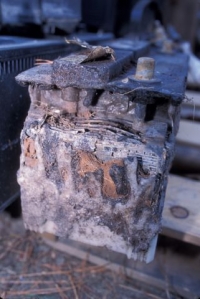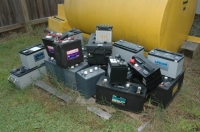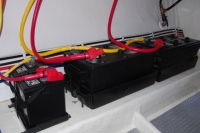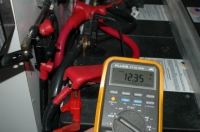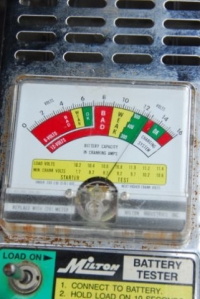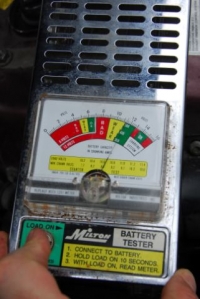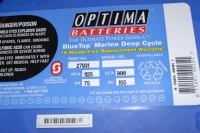Charging Start Batteries and Battery Testing
Steve,
always charge before testing or do you think a low charged battery is a better test? One of my old rules was that if it was dead in the spring, I tossed it. I have always used a 2-4 amp trickle charger. Do you think this sort of product is worthwhile?
Thanks.
Howard N.
Steve D’Antonio Marine Consulting client
58 foot express cruiser and “others”
Howard:
Before undertaking any battery testing or maintenance, be certain to wear safety goggles and gloves, batteries that are suffering from internal shorts or other malfunctions have been known to explode when load tested. And, batteries under charge emit explosive hydrogen gas, so be sure to carry out your work in a ventilated area. If that’s aboard your boat, turn engine compartment ventilation fans on prior to beginning your work.
Another method of testing battery condition is measuring its resting voltage, resting being defined as no charge and no load for 24 hrs. A fully charged flooded battery is 12.6 volts, AGM or gel about 12.8. Interestingly, only about six tenths of a volt differentiates a fully charged battery from one that is effectively dead. Essentially, 12.0 is dead.
As far as keeping flooded batteries float charged, for over a decade I’ve used, with success, Guest Model 2602 Battery Pal for batteries up to Group 31 size and a Guest Model 2603 Battery Pal Magnum for larger batteries, 4D and 8D sizes. These float chargers will keep a battery, “maintained” for years, literally. Water should be checked every quarter, but rarely needs topping up before 6 months or a year.
For AGM or gels, get a little more sophisticated with a, “smarter” float charger such as the one you mentioned, the Pulsetech Extreme (whether they can resurrect a seriously sulfated battery is remains somewhat open to debate) or a SeaVolt Battery Maintainer (I use one of these on my home 12 kW gen battery, which is a Northstar AGM).
Finally, do the impedance type battery testers work? My experience with them has been mixed. They seem to be much better at accurately determining battery condition for starting rather than deep cycle batteries. On several occasions the impedance tester has condemned a battery that then easily passed a 500 amp resistive load test while maintaining a healthy 10.5 volts (that’s my load test threshold, the voltage a battery should hold while it’s cranking or being loaded tested, although some testers indicate 9.5 is acceptable). The newest crop of impedance testers, such as Midtronics’s EXP-1000, is reportedly much more reliable when testing deep cycle batteries. I haven’t used one so I can’t comment from experience, although a colleague indicates they are substantially improved over the Micro series. For the time being, I’ll use the toaster or carbon pile resistive testers in order to check suspicious results where starting and deep cycle/house batteries are concerned.
Many batteries die premature deaths because of improper charging protocols.
Starting and house batteries may require different methods for reliable load testing.
Carbon pile load testers, like the one shown here, place a heavy load on the battery in order to simulate high ampere consumer scenarios such as starting or inverter use. Safety goggles should be worn when ever working with batteries, regardless of whether they are flooded, AGM or gel.
Be certain, when purchasing a battery, you understand the difference between CCA (Cold Cranking Amps) and MCA (Marine Cranking Amps).
Digital, electronic battery testers are gaining popularity and their performance has improved since they were first introduced, however, they may on occasion still be, “fooled” by deep cycle batteries.
